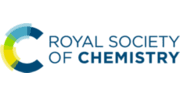We are excited to share the success of Celia Castillo-Blas’s first-time independent article in ChemComm; “Stabilisation and functional enhancement of a metal–organic framework purinate-glass composite” included in the full milestones collection.
Read our interview with Celia below.
What are the main areas of research in your lab and what motivated you to take this direction?
The main focus of my group is the development of new hybrid glasses and hybrid glass-based composites. This is an emerging area in materials science, offering the opportunity to build a new library of functional materials with unique properties. What makes this field particularly exciting is its interdisciplinary nature and potential for real-world impact, especially in areas like energy, catalysis, and environmental remediation. The novelty of working with meltable hybrid frameworks and shaping them into glasses opens up a space for innovation that’s both scientifically challenging and societally relevant.
Can you set this article in a wider context?
This article advances the field of MOF crystal-glass composites (CGCs) by demonstrating the use of a low-Tg, bioactive MOF glass (agZIF-UC-7) as a matrix for stabilizing a well-known crystalline MOF, UiO-66. Traditionally, MOF CGCs relied on glassy ZIF-62, limiting compositional and functional diversity. By introducing agZIF-UC-7, we broaden the toolkit of meltable MOFs and show that embedding UiO-66 in this matrix improves chemical stability, gas adsorption, and dye uptake, while preserving the structural integrity of both components. This work lays the foundation for next-generation hybrid materials with enhanced performance for biomedical, environmental, and separation applications, and opens the door for using other MOF glasses beyond ZIF-62 in composite fabrication.
What do you hope your lab can achieve in the coming year?
In the next year, I hope our lab will build a diverse library of meltable hybrid materials and their composites. We’re particularly interested in targeting applications in environmental remediation, such as water decontamination, where the structural versatility and tunability of hybrid glasses can offer real advantages.
Describe your journey to becoming an independent researcher.
My journey has been shaped by a deep curiosity for materials and their behavior. After completing my PhD, I had the opportunity to work in world-class research environments where I was exposed to both fundamental and applied materials science. Over time, I became increasingly drawn to hybrid systems—materials that combine the best of inorganic and organic chemistry. Launching my own lab felt like a natural next step, driven by the desire to explore this new class of materials and mentor the next generation of scientists.
What is the best piece of advice you have ever been given?
One of the best pieces of advice I’ve received is: “Don’t be afraid to go beyond your comfort zone.” Pushing boundaries—whether scientific, technical, or personal—often leads to the most rewarding discoveries. Embracing uncertainty and staying open to collaboration have been key to my development as a researcher.
Why did you choose to publish in ChemComm?
ChemComm is one of the most respected journals in the field of chemistry, known for its rapid dissemination of high-quality, cutting-edge research. It was the ideal platform for communicating our findings to a broad scientific audience and for highlighting the novelty of our work in hybrid glasses.
 |
Celia Castillo-Blas is an “Atracción de Talento – César Nombela” Fellow at ICMM-CSIC and an emerging PI with a strong profile in porous crystalline and hybrid amorphous materials for energy and environmental applications. She has over 10 years of research experience, including six as a postdoctoral researcher, and her work combines materials synthesis with advanced structural analysis using synchrotron X-rays and neutron scattering. Dr. Castillo-Blas obtained her PhD in Chemistry at ICMM-CSIC, where she pioneered studies on metal distribution in MOF clusters, research recognized with the Xavier Solans Award (2018) and an RSEQ Thesis Accésit (2020). She later held postdoctoral positions at UAM and the University of Cambridge, working on disordered MOFs and hybrid glasses, and received the RSEQ post-doctoral Young Researcher award in 2024. She has published 33 research papers (h-index = 17), participated in over 20 international conferences (8 invited talks), and organized the first Early Career Researchers in MOFs Meeting (2024). |
Explore more ChemComm Milestones news and updates on our Bluesky Feed (@chemcomm.rsc.org) and LinkedIn (ChemComm Journal)











